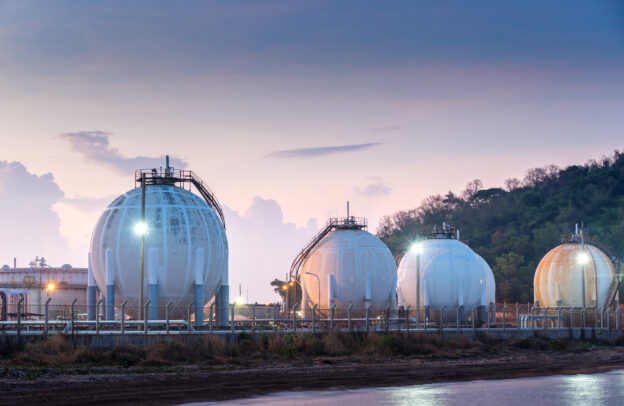Natural gas and renewable gases are two energy sources that are being highly considered for the transition towards a more sustainable and efficient economy in the use of natural resources.
Energy is essential for the functioning of society; However, energy production and consumption also have significant environmental and social impacts. For this reason, it is important to seek more sustainable and environmentally friendly energy solutions.
In this article, we’ll explore the energy colors of natural gas and renewable gases and how they can contribute to cleaner, more sustainable energy.
The colors of natural gas and renewable gases
Natural gas and the color blue
Natural gas is a fossil energy source found in underground deposits. It consists mainly of methane and other hydrocarbons. Extracted by drilling wells and transported through pipelines to power plants, it is a flexible and reliable source of energy that can be used for electricity generation. However, their production and use also have significant environmental and social impacts.
This gas has a direct relationship with the color blue, since its extraction and transport involve the use of large amounts of water, for its extraction, which is carried out through a process of hydraulic billing or fracking, which involves the injection of water. , sand and chemicals in the subsoil to release the gas. This process has been censured for the environmental impacts it generates, such as water pollution and the release of greenhouse gases.
In addition, transporting natural gas through pipelines also involves the use of large amounts of water for cooling and cleaning. This can have major impacts on aquatic ecosystems and the availability of water for other uses.
Despite these environmental impacts, it is considered an important energy source in the transition to a low carbon economy. This is because natural gas emits fewer greenhouse gases than coal and oil, making it a cleaner option for electric power generation.
Renewable gases and green and brown colors
Renewable gases are a sustainable and environmentally friendly source of energy . They are produced from renewable and sustainable sources, such as biomass, organic waste and energy crops. Renewable gases include biogas, landfill gas, and syngas, among others.
Biogas is one of the most common renewable gases and is produced from the decomposition of organic matter, such as food waste and animal waste. It is a mixture of methane and carbon dioxide, and can be used as a fuel for electricity generation, heating, and transportation.
Landfill gas is produced from the decomposition of waste in landfills. This gas contains mainly methane and carbon dioxide.
Synthesis gas is produced from the combination of hydrogen and carbon dioxide. This process is known as gasification and can be used to produce synthetic natural gas.
Renewable gases have a direct relationship with the colors green and brown. The green color represents clean and sustainable energy that is produced from renewable and sustainable sources. The brown color represents organic matter that decomposes to produce biogas and landfill gas. These colors are important because they reflect the sustainability and environmental friendliness of renewable gases.
Renewable gases have significant environmental and social benefits. Firstly, they reduce greenhouse gas emissions and thus contribute to the fight against climate change. Second, they promote sustainable waste management and pollution reduction. Third, they create employment opportunities and local economic development in rural areas.
The combination of natural gas and renewable gases: the color turquoise
The combination of natural gas and renewable gases is also an interesting option for a transition towards cleaner and more sustainable energy. This combination is known as renewable natural gas or biomethane, it is generated from the capture and treatment of biogas, which is purified and injected into the natural gas network for use as fuel, it has the same properties as natural gas conventional and can be used in the same processes and applications.
Biomethane has a direct relationship with the color turquoise, which represents the combination of the colors blue and green. This color represents the integration of natural gas and renewable gases to produce cleaner and more sustainable energy. Biomethane has important environmental and social benefits, as it combines the reduction of greenhouse gas emissions and sustainable waste management with the energy security and flexibility of natural gas.
Conclusions
Natural gas and renewable gases are two important energy sources in the transition towards a more sustainable and efficient economy in the use of natural resources. Natural gas is a flexible and reliable source of energy, but its production and use also have environmental and social impacts. Renewable gases are a sustainable and environmentally friendly energy source, which promotes sustainable waste management and pollution reduction.
The energy colors of natural gas and renewable gases reflect the sustainability and environmental friendliness of these energy sources. The blue color represents the energy security and flexibility of natural gas, while the green color represents clean and sustainable energy produced from renewable and sustainable sources. The brown color represents the organic matter that breaks down to produce biogas and landfill gas, and the turquoise color represents the combination of natural gas and renewable gases to produce cleaner, more sustainable energy.
Bibliographical sources:
- International Energy Agency (IEA)
- United Nations Framework Convention on Climate Change (UNFCCC)
- European Biogas Association (EBA)
- Natural Gas Vehicles for America (NGVAmerica)

